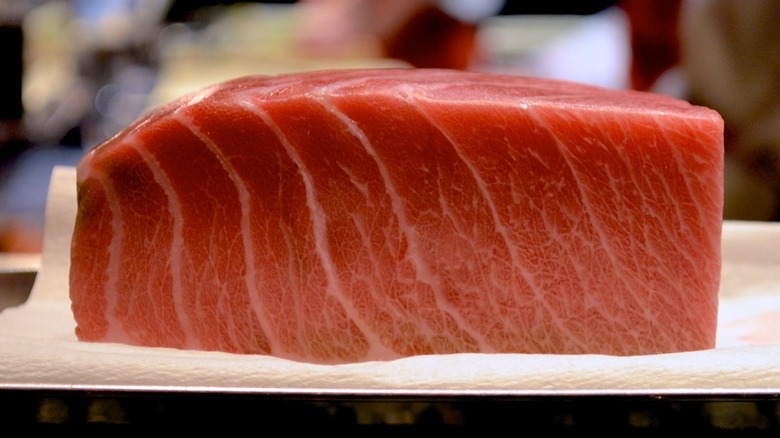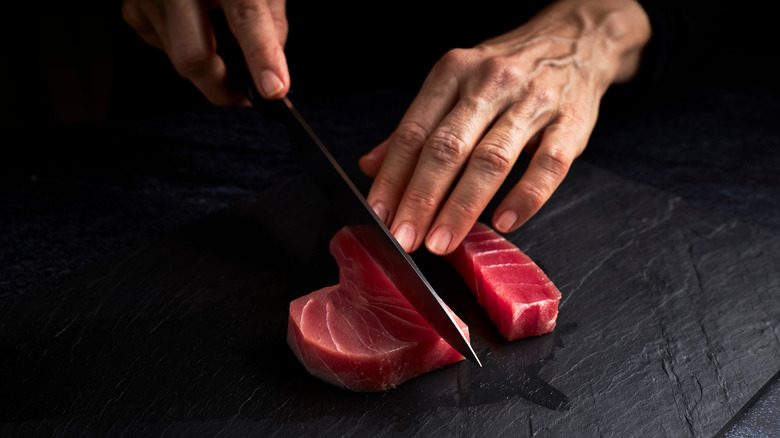Why Bluefin Tuna Used To Be Only Used For Cat Food
According to Worldwildlife, bluefin tuna (Thunnus Thynnus) is the largest type of tuna that can live up to 40 years. These fast, predatory fish have sharp vision and usually feed on mackerel, herring, and eels. There are three distinct species of bluefin tuna: Atlantic, Pacific, and Southern. Out of the three, the Atlantic bluefin tuna is the largest and most endangered. It can be very expensive as well, so if you want to taste it, it's going to cost you. For perspective, at an auction held in Japan in 2019, a 612-pound bluefin tuna was sold for a whopping $3 million (via Business Insider).
The meat is divided into three parts: Chutoro, which goes around the side of the tuna; akami, the lean part close to the backbone; and otoro, the fattiest and most desirable part taken from inside the belly. Otoro is often used for sashimi due to its rich and slightly sweet flavor and a texture that almost melts in your mouth. However, due to these facts, otoro is also the most expensive part of bluefin tuna (per Umami Insider). But why is Bluefin tuna so expensive?
The journey from cat food to worldwide delicacy
Just a few decades ago, during the period of tuna sport fishing in the United States and Canada in the 1940s, 50s, and 60s, these big tuna fish were first properly weighed and photographed before they were tossed back into the sea, sent to one of many landfills, or even mashed up and sold as cat food. Bluefin tuna was considered too bloody for Americans, so they had little interest in eating it. As a result, many large bluefins were sold to processors of cat or dog food (via Smithsonian Magazine).
In the early 1970s, however, there was a turnaround connected with the advancements in refrigeration technology, and the Japanese began enjoying beef, which then sparked the interest for the equally bloody Atlantic bluefin tuna. These fish caught in the U.S. began selling for thousands of dollars at Japanese sushi markets. What was once considered a useless fish was now a delicacy that was used for sushi and sashimi, and by the 90s, it was not only popular in Japan, but across the world.
Here's the real difference between sushi and sashimi if you want to learn more.

